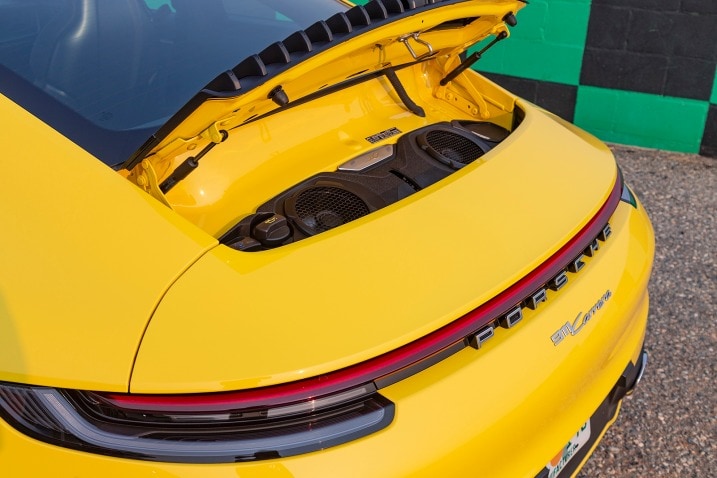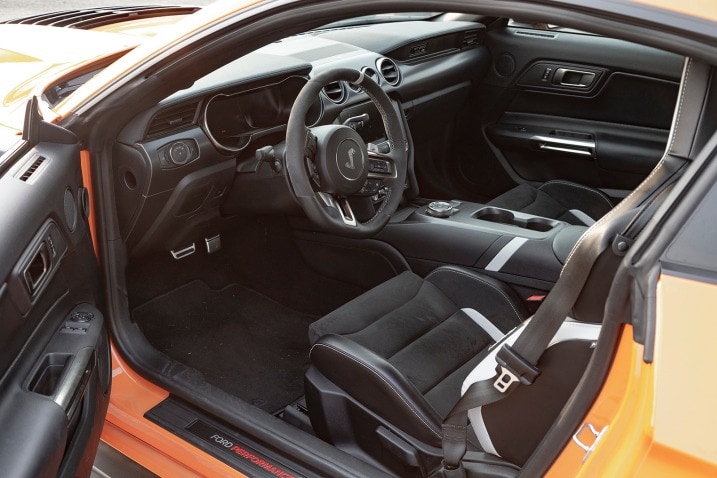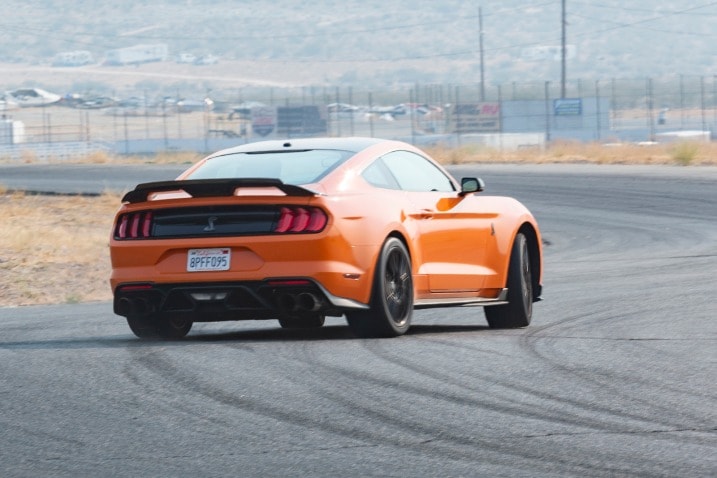0-60 Times and Top Speed: Corvette vs. GT500 vs. 911
With 760 horsepower, the GT500 would seem the favorite in a straight line. Ultimately it is. In testing at our private test track we recorded a 11.3-second quarter-mile pass at 129.9 mph. That edges out the Corvette (11.5 seconds) and the 911 Carrera (11.8 seconds). But the race doesn't start that way.
In a C8 vs. GT500 drag race, the Corvette is actually quickest to 60 mph, reaching it in 3.4 seconds (3.2 seconds with a 1-foot rollout). The GT500 is right behind, running to 60 mph in 3.7 seconds (3.4 seconds with a 1-foot rollout). The 911 follows the Corvette, reaching 60 mph in 3.6 seconds (3.4 seconds with a 1-foot rollout).
How does the 379-hp 911 outmatch the GT500 to 60 mph? For starters, our test 911 was 777 pounds lighter than our GT500. Also, the 911's engine and transmission essentially sit on top of the rear wheels. With the mass of the drivetrain pressing directly on the tires, the 911 has more traction available, which its launch control system is happy to use. The mid-engine Corvette reaps a similar benefit.
The longer the race goes, the more the Shelby is able to deploy its awesome power. This is evident by the 10 mph greater trap speed (how fast it's going at the quarter-mile) versus the Corvette and 911. In a GT500 vs. C8 Corvette drag race, the Shelby wins — eventually.
As far as top speeds go, the Corvette has the biggest bragging rights with a 194 mph manufacturer claim. The 911 is second, with Porsche touting 182 mph, and Ford says 180 mph for the GT500. We don't test top speed for reasons related to practicality and because, at least in the U.S., it's mainly related to ego.







 by
by